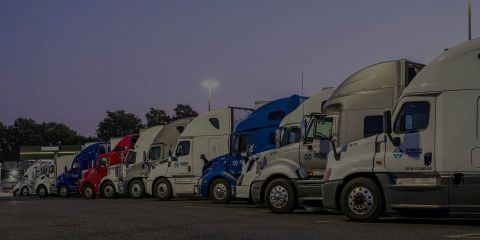
Transporting heavy equipment across state lines presents unique challenges that require careful planning and execution. From navigating complex legal requirements to ensuring the safety of valuable machinery, each step of the process demands attention to detail if you don’t want to disrupt supply chains for your business and industry. Hiring professionals with expertise in moving heavy equipment can significantly simplify the journey while minimizing risks.
Hiring a Professional Moving Company
Moving heavy equipment is not a task to tackle alone. A professional moving company provides the expertise, tools, and resources necessary to manage the complexities of such relocations. These experts understand how to handle large and delicate machinery while ensuring it complies with all state and federal regulations.
When choosing a company, look for a proven track record in transporting heavy equipment in your area and ask for references. For instance, if you’re anywhere in South Florida, Pro Movers Miami is a prime example. With their assistance, you can avoid common pitfalls and ensure your equipment reaches its destination safely.
Legal and Regulatory Requirements
Crossing state lines with heavy equipment involves navigating a maze of legal and regulatory requirements. Each state has specific weight limits, permits, and routing restrictions laws. To successfully navigate the legal logistics of this transportation, consult local legal experts. For example, oversized loads often require special permits, pilot cars, or restricted travel times.
Failure to comply with these regulations can lead to fines, delays, or even impounding of equipment. Ensure all paperwork is in order before starting the journey to avoid these issues.
Logistical Challenges
The logistics of moving heavy equipment can be daunting. Route planning is critical, as not all roads are designed to accommodate oversized loads. Bridges, low-clearance overpasses, and weight-restricted roads can all pose significant obstacles.
Advanced planning can help mitigate these challenges. Use mapping tools to identify suitable routes and consider hiring a logistics expert to manage the process. Additionally, coordinating with local authorities can help ensure smooth navigation through restricted areas.
Ensuring Equipment Safety During Transit
Protecting heavy equipment during transit is a top priority. Improper packing or loading can result in significant damage, leading to costly repairs or delays. Securing machinery with high-quality straps, chains, and padding can prevent shifting and minimize risks.
Specialized trailers, such as flatbeds or lowboys, are essential for transporting oversized loads. Regular inspections during transit can also help identify potential issues early, ensuring the equipment remains in top condition throughout the journey. You also need to find cost-effective warehousing near the destination.
Cost Considerations and Budgeting
Moving heavy equipment can be expensive, but proper budgeting can help manage costs effectively. Common expenses include labor, permits, fuel, and equipment rental. Unexpected costs, such as route detours or additional permits, can arise, so it is essential to include a contingency fund in your budget.
To keep costs under control, compare quotes from multiple professional moving companies. Choose a provider that offers comprehensive services at a reasonable price. Investing in quality services upfront can prevent costly mistakes and delays later on.
The Role of Technology in Heavy Equipment Transport
Advancements in technology have revolutionized the process of transporting heavy equipment across state lines. aGPS tracking systems allow for real-time monitoring, ensuring that equipment remains on the designated route and arrives on schedule. These tools also help identify potential traffic or weather-related delays, enabling drivers to adjust their plans as needed.
Moreover, simulation software can assist in planning the most efficient and safe routes. By analyzing variables such as road conditions, bridge capacities, and potential hazards, this technology minimizes risks and optimizes transit time. Additionally, digital inventory systems help track and document each piece of equipment, ensuring nothing gets lost or damaged during the move. Embracing these tools can streamline the process and provide peace of mind.
Conclusion
Moving heavy equipment across state lines is a challenging process, but it can be managed successfully with proper preparation and professional assistance. From navigating legal requirements to ensuring equipment safety, every detail plays a crucial role in a smooth transition. Hiring experienced professionals is a key step in overcoming these challenges and protecting your valuable machinery. With the right approach, moving heavy equipment can be a streamlined and efficient process.
Based in Vancouver, British Columbia, Canada, 18 Wheels relies on experience and integrity to make customers happy and remain on the cutting edge of shipping and logistics management.
If you have any questions about this article or you would like to talk to us about your shipping needs, please call us at (604) 439-8938.
